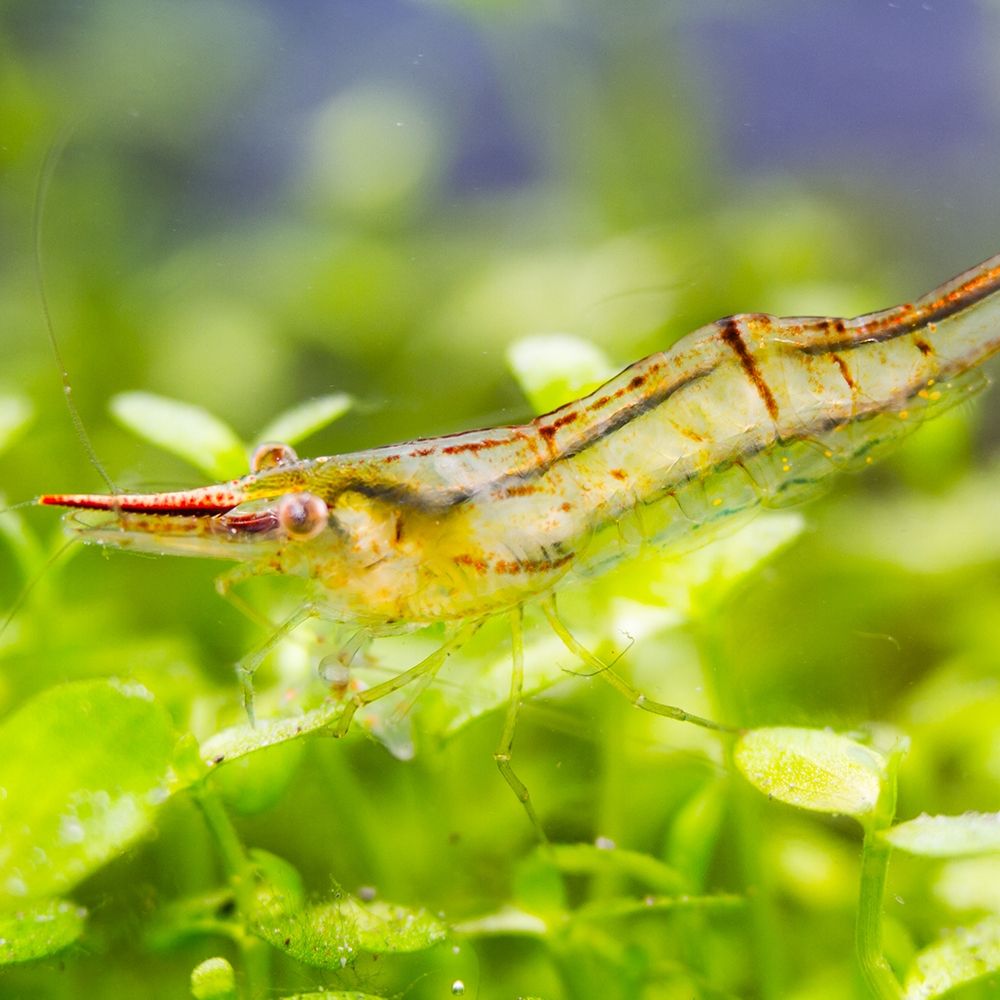The Pinokio shrimp, scientifically known as Caridina gracilirostris, is a fascinating freshwater shrimp species native to Southeast Asia. It is known for its distinctively long and slender rostrum, which gives it its unique and memorable appearance. In recent years, Pinokio shrimp have gained popularity among hobbyists and aquarists due to their striking appearance and easy maintenance.
Appearance and Behavior
The Pinokio shrimp is a small, freshwater shrimp species that typically grows to around 2-3 cm in length. Its most distinguishing characteristic is its elongated rostrum, which can reach up to three times the length of its body. The rostrum is thin, translucent, and almost hair-like in appearance, giving the shrimp a delicate and graceful appearance.
In terms of coloration, Pinokio shrimp are generally translucent with a slightly green or yellow tint. They have a series of darker spots along their body, which can range in color from brown to red. The exact coloration can vary depending on the individual shrimp and its environment.
Pinokio shrimp are generally peaceful and can be kept in small groups. They are active and curious creatures that enjoy exploring their surroundings. They are also known for their cleaning abilities, as they will actively scavenge for algae and other debris in the aquarium.
Habitat and Distribution
The Pinokio shrimp is native to Southeast Asia, where it can be found in a variety of freshwater habitats, including rivers, streams, and ponds. It is particularly common in areas with slow-moving water and plenty of vegetation.
In the wild, Pinokio shrimp are often found in large groups, where they can forage for food and protect themselves from predators. They are able to adapt to a wide range of water parameters, but they prefer slightly acidic water with a pH between 6.0 and 7.5.
Aquarium Care
Pinokio shrimp are a hardy and easy-to-care-for species that are suitable for both beginners and experienced aquarists. They can be kept in tanks as small as 5 gallons, although larger tanks are recommended for larger groups.
When setting up an aquarium for Pinokio shrimp, it is important to provide plenty of hiding places and vegetation. The shrimp will appreciate the cover and will use it to molt, breed, and hide from potential threats. A substrate of sand or fine gravel is also recommended, as it will provide a natural environment for the shrimp to forage.
Pinokio shrimp are omnivorous and will eat a variety of foods, including algae, biofilm, and commercial shrimp pellets. It is important to provide a varied diet to ensure that the shrimp receive all the necessary nutrients. Overfeeding should be avoided, as it can lead to poor water quality and health problems.
Breeding
Breeding Pinokio shrimp is relatively easy, and they are known for their high breeding rate. The shrimp are oviparous, which means that they lay eggs that hatch into small larvae. The larvae are not capable of fending for themselves and must be provided with appropriate food and shelter.
To encourage breeding, it is important to maintain stable water parameters and provide plenty of hiding places and vegetation. A separate breeding tank may also be necessary to ensure the survival of the larvae.
Conclusion
The Pinokio shrimp is a unique and fascinating species that is well-suited to life in the aquarium. Its distinctive appearance and easy care requirements make it a popular choice for both beginner and experienced aquarists. With proper care and attention, Pinokio shrimp can thrive and provide a beautiful and interesting addition to any aquarium.
















![]()
